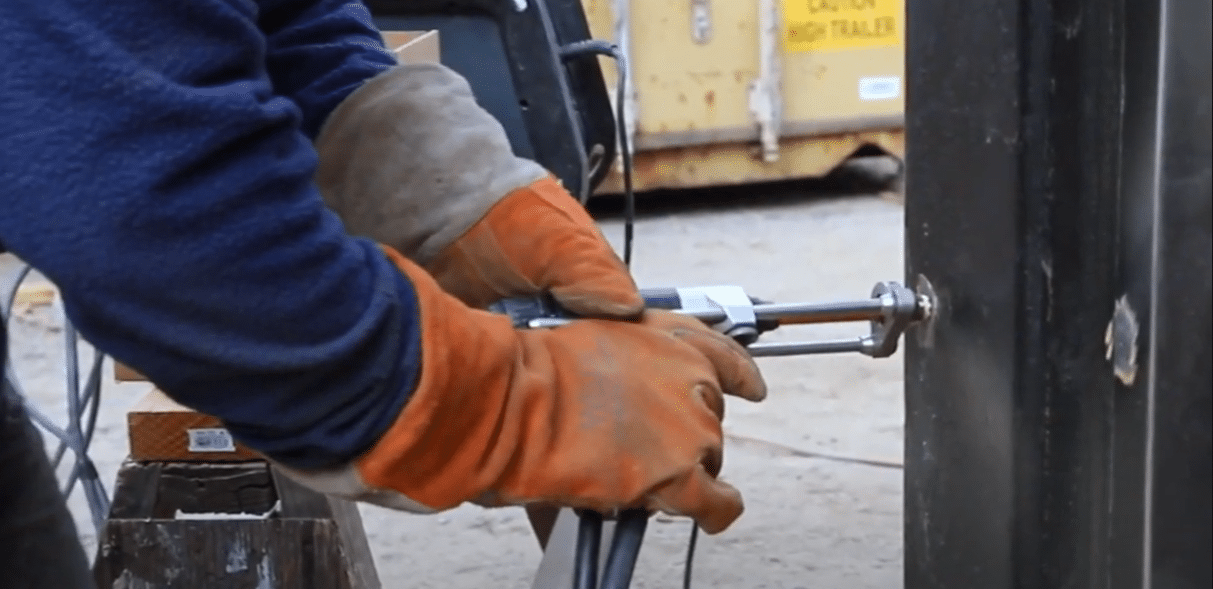What Process Should You Use?
Capacitor Discharge (CD) stud welding is a semi-automatic arc welding process. However, with CD welding, you have the ability to weld small diameter studs to very thin material. Since the entire weld cycle is completed in several milliseconds, welds can be made to thin sheets of metal without pronounced distortion, burn through or discoloration. The CD process allows stud welding of dissimilar metals.
The CD process is commonly used in most sheet metal shops.
On the other hand, Arc stud welding allows almost any size or type of weld stud to be welded. Studs must be manufactured from weldable material and designed with a special arc stud tip. With the Arc process, you obtain a full fusion weld that becomes stronger than the stud itself. Arc stud welding is applicable to mild steel, stainless steel and aluminum.
The Arc process is commonly used in most fabricating/structural steel shops.
Capacitive Discharge




Arc




Length Information
Capacitor Weld Pins are available in 12-GA and 14-GA up to lengths of 6-inches as standard. Special lengths are available upon request.
Capacitor Weld Studs are manufactured in minimum lengths of 1/4-inch up to 2-inch as standard. Other lengths are available upon request.
Capacitor Weld Studs and Pins do not undergo any loss of length after welding.
Arc Studs are available from minimum lengths After Weld (AW) shown on individual specification sheets up to any length in increments of 1/8-inch. Please call one of our service representatives for specification sheets.
All Arc Studs and Pins are reduced approximately 1/8-inch in length after welding for diameters up to 1/2-inch weld base diameter and approximately 3/16-inch for 5/8-inch weld base or larger.
View our Products!
Click here to view all Capacitive Discharge stud welding systems offered here at Stud Welding Products! Click here to see our Arc welding systems! Have questions? Email us at Info@studweldprod.com or call our office at 800-252-1919 and we will get back to you shortly!

